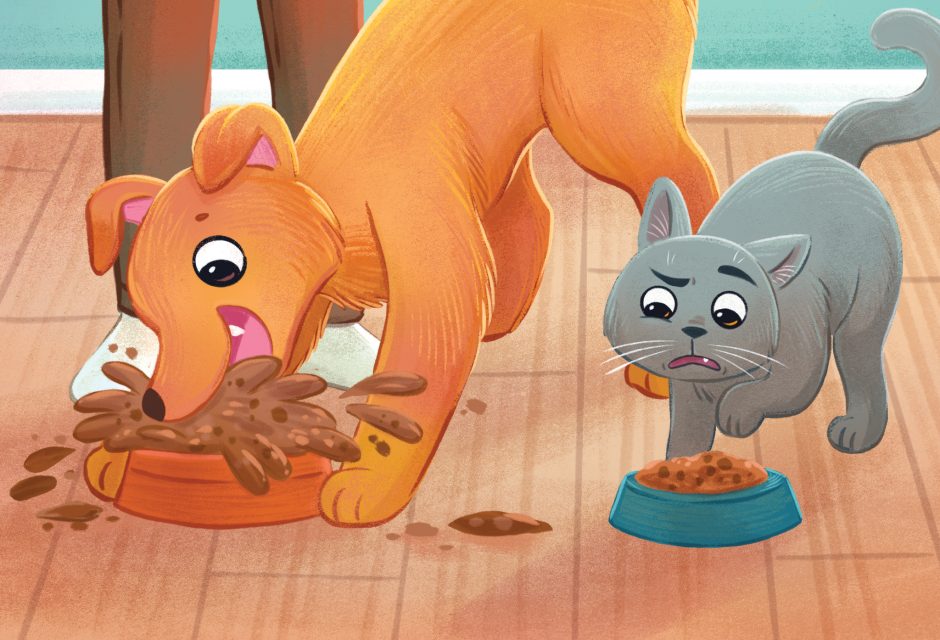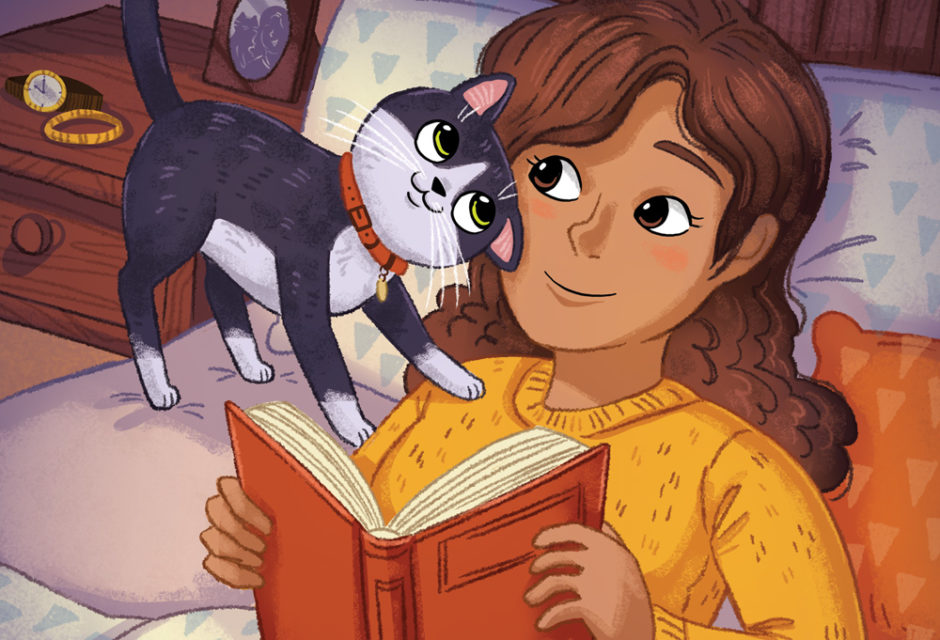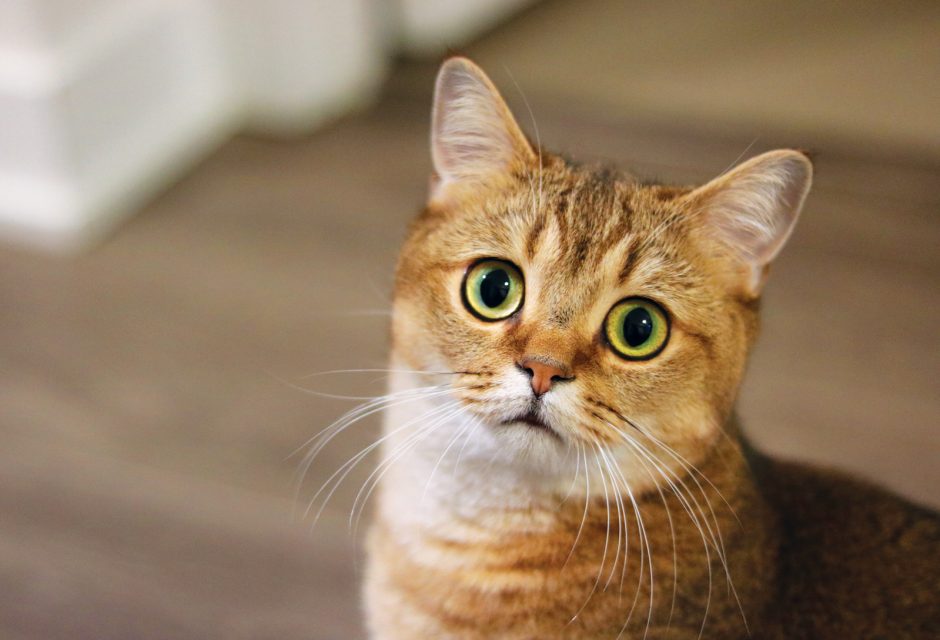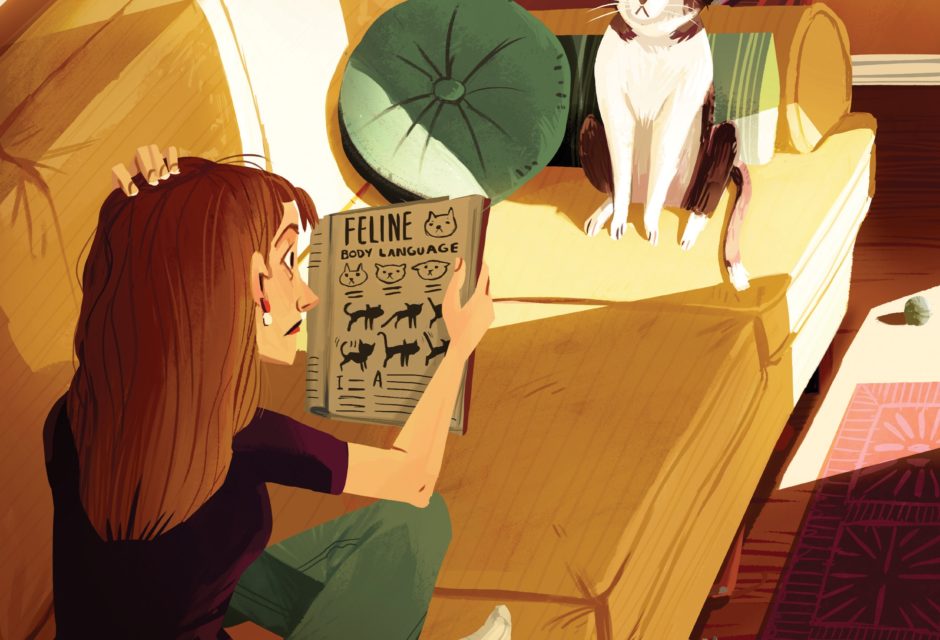

The Cat Whisperer
An exclusive interview with cat behaviour expert Mieshelle Nagelschneider
You know when you read something so illuminating and right-on that you’re, like, eureka? Well that was our experience reading Mieshelle Nagelschneider’s new book The Cat Whisperer. We’re unabashed to call Mieshelle our cat guru, what with the very insightful inside track to the feline mind she offers. Troubled by an ongoing cat behaviour problem? Looking to improve your bond? Mieshelle’s your cat lady! We asked her a bunch of questions about her magical connection with and understanding of felines, so that you can apply some of her techniques in your own home. Read on…
Q: You have a passion for cats and an innate understanding of what makes them tick. Would you say it’s a gift? Have you always loved cats?
A: As a very young child, I only had access to barn or feral cats. It was a challenge to even get close to many of them, let alone socialize them. This elusiveness made them seem almost mythological, like the unicorn or leprechaun. As a four-year-old, to befriend one was truly magical. Today, I still like a challenge and to be good at something that not very many people are good at. I think it’s a gift to be able to read animals well, but some anthropologists now believe that we all have this innate ability. This makes sense to me. After all, we have been living next to animals from the very beginning.
Q: What is it you love about cats?
A: I love everything about the cat! They are the most dynamic of companion animals. Where can you find an animal that’s cute and cuddly one minute, but in a breath show they are a formidable predator?
Q: Your book is filled with great tips for reshaping all kinds of problematic behaviours, from destructive scratching, to inappropriate elimination, to compulsive chewing. Can you tell us about your approach to behaviour-training cats?
A: At The Cat Behaviour Clinic our approach is an all-encompassing one that first takes an in depth look at every category of the cat’s life—environment, feeding, play time, social interaction with people and other cats, and early socialization, just to name a few. Many of our clients are surprised by the nine-page behaviour history questionnaire they have to complete prior to a phone consultation. I don’t just treat symptoms of a bigger problem. Only addressing an aggressive behaviour, for example, would be like stringing beads with no knot at the end of the string. It’s important to learn what factors are causing a cat to be aggressive to effectively solve the problem. Cats also respond best to positive training and I don’t allow reprimanding or punishment. This will backfire with cats and break the bond with the owner and lead to even more behaviour issues. You want to create a utopia for your cat, not a place that’s stressful.
Q: Why do you think it is the best method of cat training?
A: Understanding how cats think and see their world is key. If you can create an environment that makes sense to their wildcat instincts, you should not have any behaviour issues. Also, because cats are not pack animals, they have no reason to please the owner or perform “obedient” behaviour like a dog would. If anything, cats are less like a dog and more similar in nature to a raccoon or a squirrel. It’s all about letting the environment do the work to guide their natural behaviours in ways that, in our eyes, are not behaviour issues.
Q: What are some keys to success for a person getting started with training their cat?
A: Try to create an environment that you think a little tiger or leopard might enjoy.
Q: What is the most common behaviour problem people struggle with?
A: Litter box issues by far are the number one complaint amongst cat owners, but I think are also the most easily solved.
Q: Why is it so important to give cats both vertical and horizontal space to roam?
A: Where in nature do we only find horizontal and no vertical space? Our housecats are descendants of the African Wildcat and still retain wildcat instincts and need both vertical and horizontal space. This is one of the main things I teach all of my clients in every behaviour consultation. Your cats need to have an environment that helps them exert their cat-ness.
Q: What is the weirdest cat problem someone has come to you with? Were you able to help them?
A: This was at the beginning of my behaviour-consulting career in 1999. An owner was having litter box issues with one of her cats. She was certain that one of her cats that had passed away was now a “ghost cat” and was terrorizing her other cats to the point they were afraid to go to the litter boxes. Needless to say, this wasn’t the case, but some of the things she told me were pretty uncanny. Yes, I was able to solve the issue!
Q: Do you believe cats should be kept indoors or also be allowed outdoors? Why?
A: My number one concern is cat safety. I recommend “catios” and outdoor enclosures for my client’s cats as ways to increase territory space and environmental enrichment. Walking cats on a harness and leash is also a great way to get cats safely outside. I strongly advise against letting your cat roam freely in the neighbourhood. There are too many dangers—cars, people, poisons, chemicals, and interfacing with other feral cats, not to mention becoming part of the feral cat population.
Q: What are the most important things to do in order to keep a harmonious multi-cat household?
A: One of the new techniques that you will read about in my cat behaviour book is called “Social Facilitation,” aka The Nagelschneider Method. It involves making sure your cats have a group scent which facilitates social behaviour between them. The group scent is like a “social glue” and your cats will feel affiliated and more accepting of one another. If you have a five-cat household, each cat should carry the scent of the other four cats. Cats create and maintain a group scent by grooming or rubbing up against each other. Sometimes you will have what we call a “social facilitator” cat. She is like the diplomat of the household, grooming and rubbing up against everyone, helping to create the social glue/group scent. But sometimes the owners have to become the social facilitator and brush all of their cats a few times a day with the same brush. You should brush them on the same areas cats would normally groom and rub up against each other—on the head, neck, shoulders, and along the rib cage. Leave out the hindquarters and tail. Not having a group scent spells trouble—your cats will behave like you’re forcing them to live in captivity together. Best case scenario, they will tolerate one another; worst case, your household will be a war zone.
Q: What is the one thing a cat owner can do to make their home a better space for their cat to thrive in?
A: Create an enriching environment that provides both mental and physical activity—daily play times (interactive and solo), vertical space, scratching areas, and try to incorporate food puzzles or other novel feeding opportunities into their lives. Just like our housecats, tigers and leopards in zoos develop some of the same behaviour issues being kept in captivity. Increasing both mental and physical activity has proven to not only help the housecat, but the big cats too!
Q: What is something you think more people need to know about sharing their life with cats?
A: Cats are as wild as we have become civilized. Respecting a cat for what they really are—an animal with wild instincts—is the first step to coexisting peacefully with your feline companion. Create an environment where your cat can thrive. Remember, you can take the cat out of the jungle, but you can’t take the jungle out of the cat.
Q: What is the cutest thing one of your seven cats does to show you how much you mean to him or her?
A: Anywhere I happen to be, all seven cats surround me or sit on me. They do a lot of head bunting, slow eye blinks (a nice gesture), and licking of my face. One cat, Jasper, wraps both his arms around my neck pressing his face into mine while drooling and purring loudly.
Q: If you can give just one piece of advice to our readers what would it be?
A: In one of my animal behaviour classes at Harvard University I learned a piece of advice that has stuck with me through the years: In order to help our animals with behaviour issues, we must first learn to see the world through their eyes. We must also learn to respect cats for what they are—our most wild of companion animals complete with wildcat instincts.
Q: What exciting plans do you have in the works?
A: I was recently on The Today Show talking about cats and The Cat Whisperer book and I’m currently helping veterinarian Jenny Conrad promote her anti-declawing film, The Paw Project. I’m also looking forward to a media tour in Germany, Austria and Switzerland because my book was also published there. It’s the same book, only in German! “Katzenflusterin”! That’s German for Cat Whisperer!
Join the newsletter and never miss out on cat content again!
"*" indicates required fields
By clicking the arrow, you agree to our web Terms of Use and Privacy & Cookie Policy. Easy unsubscribe links are provided in every email.










